|
|
2014年, 第1卷, 第1期 刊出日期:2014-10-01
|
下一期 |
|
|
|
|
|
Preface: introducing the Asian Journal of Urology
Yinghao Sun, Leland W. K. Chung, Michael J. Droller
Asian Journal of Urology, 2014, 1(1): 1-1.
 摘要
摘要
(
340 )
 PDF
PDF (294KB)
(
317
)
We are delighted to publish the inaugural issue through which announces the launch of the Asian Journal of Urology (AJU).AJU is an international peer-reviewed journal jointly founded by the Chinese Urological Association (CUA) and the Second Military Medical University (SMMU) in Shanghai, China.The journal will publish articles in urologic specialties both scientifically and clinically.These will comprise urologic oncology, endo-urology, urologic stone disease, female urology, erectile dysfunction, pediatrics, renal transplantation, reconstructive surgery, infertility, radiology, pathology, and neuro-urology.
相关文章 |
计量指标
|
|
|
Introduction to masterpiece by Prof. Donald S. Coffey
Donald J. Tindall
Asian Journal of Urology, 2014, 1(1): 2-2.
 摘要
摘要
(
359 )
 PDF
PDF (293KB)
(
354
)
The ensuing article by Donald S.Coffey [1] highlights some important questions that need to be considered by the scientific community.It is anticipated that the Asian Journal of Urology will address many of these questions in the years to come.As a preface to this article, please allow me to provide some insights into its author, Professor Donald S.Coffey, PhD, whom I have known for more than 30 years.Don Coffey has been a giant in his field of research.He has been a scientific father figure for many and an inspiration for many young investigators in their pursuit of careers in academic medicine.His honesty, humble nature and passion for science have been a shining example for many.
参考文献 |
相关文章 |
计量指标
|
|
|
Evolution: back to the future to understand and control prostate cancer
Donald S. Coffey
Asian Journal of Urology, 2014, 1(1): 4-11.
 摘要
摘要
(
266 )
 PDF
PDF (13692KB)
(
161
)
I am most honored to be asked to contribute to the Asian Journal of Urology (AJU).For many years Asian urologists and investigators have provided major contributions to Urology.I applaud and salute this great moment.This new Journal will serve the world in so many unique ways, and we are proud to be part of this most historical moment.
参考文献 |
相关文章 |
计量指标
|
|
|
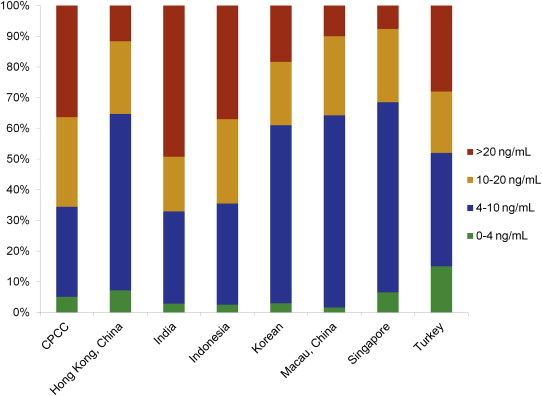
Prostate cancer in Asia: a collaborative report
Rui Chen, Shancheng Ren, Chinese Prostate Cancer Consortium, Ming Kwong Yiu, Ng Chi Fai, Wai Sam Cheng, Lap Hong Ian, Seiji Naito, Tadashi Matsuda, Elijah Kehinde, Ali Kural, Jason Yichun Chiu, Rainy Umbas, Qiang Wei, Xiaolei Shi, Liqun Zhou, Jian Huang, Yiran Huang, Liping Xie, Lulin Ma, Changjun Yin, Danfeng Xu, Kexin Xu, Zhangqun Ye, Chunxiao Liu, Dingwei Ye, Xin Gao, Qiang Fu, Jianquan Hou, Jianlin Yuan, Dalin He, Tiejun Pan, Qiang Ding, Fengshuo Jin, Benkang Shi, Gongxian Wang, Xiuheng Liu, Dongwen Wang, Zhoujun Shen, Xiangbo Kong, Wanhai Xu, Yaoliang Deng, Haibo Xia, Alexa N.Cohen, Xu Gao, Chuanliang Xu, Yinghao Sun
Asian Journal of Urology, 2014, 1(1): 15-27.
 摘要
摘要
(
897 )
 PDF
PDF (6882KB)
(
830
)
The incidence of prostate cancer (PCa) within Asian population used to be much lower than in the Western population; however, in recent years the incidence and mortality rate of PCa in some Asian countries have grown rapidly.This collaborative report summarized the latest epidemiology information, risk factors, and racial differences in PCa diagnosis, current status and new trends in surgery management and novel agents for castration-resistant prostate cancer.We believe such information would be helpful in clinical decision making for urologists and oncologists, health-care ministries and medical researchers.
参考文献 |
相关文章 |
计量指标
|
|
|
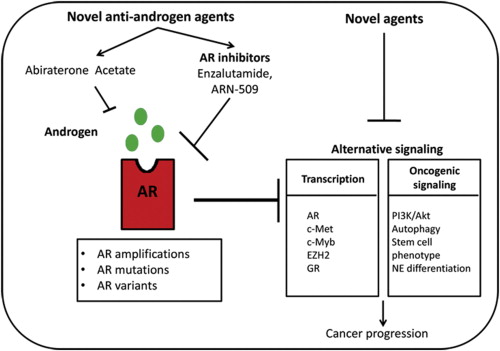
Novel anti-androgen receptor signaling agents: understanding the mechanisms of resistance
Styliani Karanika, Theodoros Karantanos, Jianhua Yin, Likun Li, Timothy C. Thompson
Asian Journal of Urology, 2014, 1(1): 28-37.
 摘要
摘要
(
414 )
 PDF
PDF (975KB)
(
808
)
Prostate cancer remains an intractable threat to the lives of men worldwide.Although deaths from prostate cancer in the United States have declined in recent years, in other parts of the world prostate cancer mortality is increasing.The introduction of 2nd generation anti-androgen receptor agents into the therapeutic armamentarium for metastatic castration-resistant prostate cancer (mCRPC) has resulted in modestly increased survival advantages as demonstrated by initial clinical trials.However, analysis of the molecular pathways affected by these agents may lead to new insight into mechanisms of resistance that drive mCRPC, including proliferation and survival signaling pathways that are derepressed by maximum repression of androgen signaling.Combination therapies that involve anti-AR signaling agents together with agents that target these pathways establish a paradigm for the development of more effective treatment of mCRPC.In this review, we briefly summarize the current clinical trial literature with regard to novel anti-AR signaling agents such as abiraterone acetate and enzalutamide.We discuss observational data that point to mechanisms of resistance that emerged from these studies.We further present and discuss recent experimental studies that address the mechanisms of resistance to these treatments.Finally, we discuss novel and rational therapeutic approaches, including combination therapy, for patients with mCRPC.
参考文献 |
相关文章 |
计量指标
|
|
|
Locally advanced and high risk prostate cancer: the best indication for initial radical prostatectomy?
Hendrik van Poppel
Asian Journal of Urology, 2014, 1(1): 38-43.
 摘要
摘要
(
439 )
 PDF
PDF (332KB)
(
458
)
High risk prostate cancer is a deadly disease that needs aggressive treatment.High risk prostate cancer is often treated with androgen deprivation therapy or combined radiohormonotherapy while there is a place for surgery in cases of operable and resectable locally advanced or high risk disease.This review summarizes the results of the different treatment strategies for locally advanced and high risk prostate cancer.Radical prostatectomy monotherapy or in combination with radiotherapy and/or hormonal treatment are analyzed.They show that radical prostatectomy is an effective treatment modality for these tumors.After surgery, the results of the pathology and the follow-up of serum PSA may indicate the need of additional adjuvant or salvage treatment strategies.
参考文献 |
相关文章 |
计量指标
|
|
|
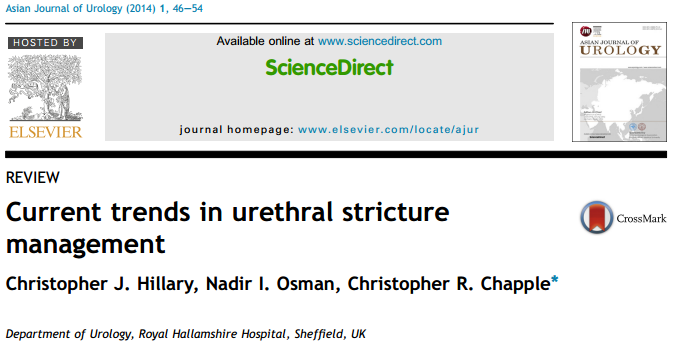
Current trends in urethral stricture management
Christopher J. Hillary, Nadir I. Osman, Christopher R. Chapple
Asian Journal of Urology, 2014, 1(1): 44-51.
 摘要
摘要
(
527 )
 PDF
PDF (350KB)
(
1034
)
The recent International Consultation on Urological Disease (ICUD) panel 2010 confirmed that a urethral stricture is defined as a narrowing of the urethra consequent upon ischaemic spongiofibrosis, as distinct from sphincter stenoses and a urethral disruption injury.Whenever possible, an anastomotic urethroplasty should be performed because of the higher success rate as compared to augmentation urethroplasty.There is some debate currently regarding the critical stricture length at which an anastomotic procedure can be used, but clearly the extent of the spongiofibrosis and individual anatomical factors (the length of the penis and urethra) are important, the limitation for this being extension of dissection beyond the peno-scrotal junction and the subsequent production of chordee.More recently, there has been interest in whether to excise and anastomose or to carry out a stricturotomy and reanastomosis using a Heineke-Miculicz technique.Augmentation urethroplasty has evolved towards the more extensive use of oral mucosa grafts as compared to penile skin flaps, as both flaps and grafts have similar efficacy and certainly the use of either dorsal or ventral positioning seems to provide comparable results.It is important that the reconstructive surgeon is well versed in the full range of available repair techniques, as no single method is suitable for all cases and will enable the management of any unexpected anatomical findings discovered intra-operatively.
参考文献 |
相关文章 |
计量指标
|
|
|
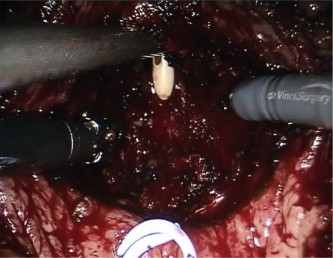
Robotic assisted laparoscopic simple suprapubic prostatectomy—The Smith Institute for urology experience with an evolving technique
Sammy E. Elsamra, Nikhil Gupta, Haris Ahmed, David Leavitt, Jessica Kreshover, Louis Kavoussi, Lee Richstone
Asian Journal of Urology, 2014, 1(1): 52-56.
 摘要
摘要
(
417 )
 PDF
PDF (1415KB)
(
552
)
Objective: Despite a multitude of minimally invasive surgical options available for benign prostatic enlargement, open simple prostatectomy (OSP) remains the standard for large prostates (typically greater than 100 g).OSP, however, is associated with significant morbidity.Recently, a few reports touting robotic application to simple prostatectomy have been published.Herein, we reviewed our series of robotic assisted laparoscopic simple suprapubic prostatectomy (RALSSP) and detailed modifications in our technique as our experience increased.Methods: All RALSSP cases performed between January 2013 and January 2014 were reviewed for demographics, pre-operative features, and perioperative outcomes.All parameters were tabulated and mean values were calculated.Student's t-test was utilized with p < 0.05 deemed significant.Details regarding surgical technique were reviewed and highlighted.Results: Fifteen patients underwent RALSSP during this period.Mean age of these men was 69 years.Mean body mass index (BMI) was 28.5 kg/m2.American Society of Anesthesiologists (ASA) score was on average 2.4.Average international prostate symptom score (IPSS) was 16.2 with the majority of men experiencing some adverse clinical sequela of such benign prostatic hyperplasia (BPH).For those patients not in retention, preoperative post-void residual (PVR) was 428 mL.All patients underwent successful RALSSP without need for conversion or need for blood transfusion.Mean estimated blood loss (EBL) was 290 mL.Five patients underwent other concurrent procedures (e.g.cystolithotomy).Mean length of hospital stay (LOS) was 2.4 days and only five patients required continuous bladder irrigation (CBI) postoperatively.Postoperative PVR improved to a mean of 33 mL and IPSS improved to 4.5 (p < 0.001).No major complications were identified.Adaptation of low transverse cystotomy, utilization of a robotic tenaculum in the #3 arm with its control by a surgeon on a second console, and the utilization of mucosal advancement have all subjectively aided in performance of RALSSP and perioperative outcomes.Conclusion: RALSSP allows for feasible performance of prostate adenoma enucleation with low risk of blood transfusion, short LOS, and significant improvement in IPSS and PVR; all while maintaining a minimally invasive approach.The use of a robotic tenaculum controlled by the secondary console and the mucosal advancement facilitate excellent outcomes and may play a role in minimizing hematuria and need for CBI.
参考文献 |
相关文章 |
计量指标
|
|
|
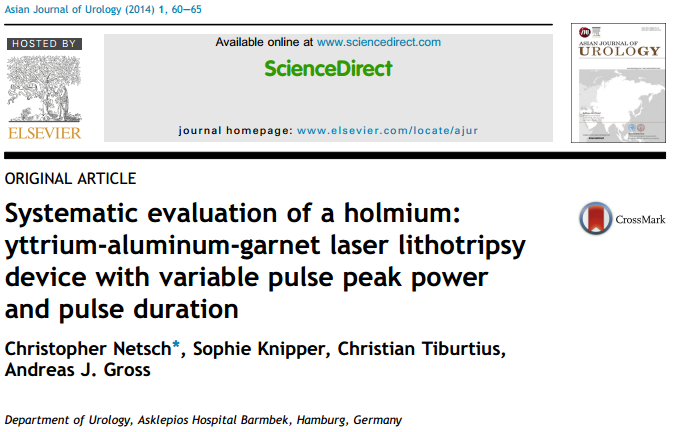
Systematic evaluation of a holmium: yttrium-aluminumgarnet laser lithotripsy device with variable pulse peak power and pulse duration
Christopher Netsch, Sophie Knipper, Christian Tiburtius, Andreas J. Gross
Asian Journal of Urology, 2014, 1(1): 57-61.
 摘要
摘要
(
357 )
 PDF
PDF (369KB)
(
500
)
Objective: The Holmium:yttrium-aluminum-garnet (Ho:YAG) laser is the standard lithotrite for ureteroscopy.This research is to evaluate a Ho:YAG laser with a novel effect function in vitro, which allows a real-time variation of pulse duration and pulse peak power.Methods: Two types of phantom calculi with four degrees of hardness were made for fragmentation and retropulsion experiments.Fragmentation was analysed at 5 (0.5 J/10 Hz), 10 (1 J/10 Hz), and 20 (2 J/10 Hz) W in non-floating phantom calculi, retropulsion in an ureteral model at 10 (1 J/10 Hz) and 20 (2 J/10 Hz) W using floating phantom calculi.The effect function was set to 25%, 50%, 75%, and 100% of the maximum possible effect function at each power setting.Primary outcomes: fragmentation (mm3), the distance of retropulsion (cm); ≥ 5 measurements for each trial.Results: An increase of the effect feature (25% vs.100%), i.e., an increase of pulse peak power and decrease of pulse duration, improved Ho:YAG laser fragmentation.This effect was remarkable in soft stone composition, while there was a trend for improved fragmentation with an increase of the effect feature in hard stone composition.Retropulsion increased with increasing effect function, independently of stone composition.The major limitations of the study are the use of artificial stones and the in vitro setup.Conclusion: Changes in pulse duration and pulse peak power may lead to improved stone fragmentation, most prominently in soft stones, but also lead to increased retropulsion.This new effect function may enhance Ho: YAG laser fragmentation when maximum power output is limited or retropulsion is excluded.
参考文献 |
相关文章 |
计量指标
|
|
 当期目录
当期目录
